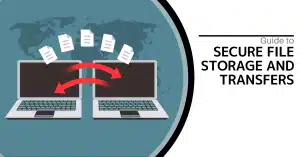.From Joe Biden’s commitment to “bridge the digital divide” to the United Kingdom virtually halving the number of homes without internet access by 2020. Governments throughout the world are convinced that access to online services is important for a more equal, productive society and economy. But this is not the end of the story. Being online does not guarantee that everyone has equal access to goods and services. People with the requisite technological abilities have a greater chance of purchasing products and accessing services, and bots are one of the reasons for this. Bots are expanding the digital divide.
A bot-driven economy widens the gap between “haves” and “have-nots.”
Most people have heard of bots, which are automated programs that do repetitive tasks on the internet, such as providing website support services, automated customer service, or scraping data for search engines. However, there is a rising number of “bad” bots on the internet . Those that are more difficult to detect and closely resemble human behavior. They’re engineered to steal personal information for fraud, take over accounts, and shut down websites.
Historically, scalping bots were employed to horde concert or athletic tickets, a tendency that eventually caused revisions in ticket resale regulations. Bots are expanding the digital divide and have invaded more industries in the last year. They are wreaking havoc in everyday life. Throughout the worldwide epidemic, bots grabbed up game consoles and graphics cards. It makes it more difficult for ordinary people to locate popular things for sale online. Recently, there has been evidence that bots are being used to track COVID-19 immunization availability. A “useful” service for many, but a problem for organizations that are the source of the data. They find their sites being delayed or taken offline by growing quantities of artificial traffic.
There are substantial advantages for people who have the skills. They mean to utilize a Bot operator: they may skip the line to purchase popular new items, get a reservation, and so on. Before you know it, bots may be making beer garden bookings or putting a Tesco shop.
All of this activity will eventually divide the internet into “haves” and “have-nots”. Those without the skills to run their own botnet or hire bot operators, such as the over-65s, low-income families, will be at a disadvantage in the bot-driven economy.
Bots will have an impact on customers’ access to goods in ways we can’t yet anticipate as more digital services emerge. They might have a far more profound and far-reaching impact as they are expanding the digital divide.
Bots- Digital divide is an unseen, disruptive force on the internet:
They can spread potentially fraudulent activities, as evidenced by recent data leaks from Facebook and LinkedIn. They are intended to trawl data in mass, may quickly scrape a plethora of publicly available data about all of us. Then publish it on the Dark Web, resulting in a complete portrait of individuals. If left unchecked, people’s faith in the internet will dwindle. As people realize that any information or data about them that circulates the internet, no matter how harmless, might be weaponized against them.
Even “good” bots have an influence on how the internet works. What happens when visitors aren’t human because bots don’t behave like humans? It has the capacity to dynamically modify how websites are constructed, making legitimate users’ access to web-based services more difficult. The end outcome will be a significant shift in how we utilize the internet. Rather than perusing websites to buy things or plan vacations, internet users will utilize a Bot operator to perform routine operations. Again, users who are willing or able to pay for bot operators will have an advantage.
Short-circuiting the rise of bots:
What can be done if people refuse to accept this picture of a bot-led internet? To begin, organizations must prioritize the security of all data – regardless of where it is housed. With malicious bots initiating more than 30% of all login attempts last year, enterprises must regard the issue of bots as a business risk as well as a threat to user privacy and data security.
Governments can also take some regulatory steps, but enforcing bot-related laws is difficult. Legislators in some countries, such as the United Kingdom, are attempting to prohibit the sale of scalping bots. Will this, however, reduce the resale problem that exists in every industry? Because the internet has no borders. Any country-specific law will be difficult to enforce if the bot operator is based in another jurisdiction.
What’s important to understand is that bot operators use the revenue generated by inventory hoarding. It resale to pay their mortgages. As a result, the bot problem is unlikely to go away and will pose an even greater challenge to consumers in the coming years.
With a variety of factors influencing the digital divide in the UK and around the world; bots do not appear to be a powerful force. Bot operators can cleverly use technology to gain an advantage and control of a market. This, in turn, has an effect on everyone. It decreases the supply of goods, raises prices, and causes frustration and panic.
To slow the bot problem, organizations must take the lead. It can be done by limiting and managing bot traffic on their websites. So only legitimate users can access them. The only way to level the playing field is to do so. There are bot mitigation technologies available. They range from the now-familiar CAPTCHA and simple rate-limiting to more sophisticated identification tools that detect and mitigate suspicious bot activity. By limiting bots’ excessive influence, all consumers will have equitable access to the information, services, and goods they require.








